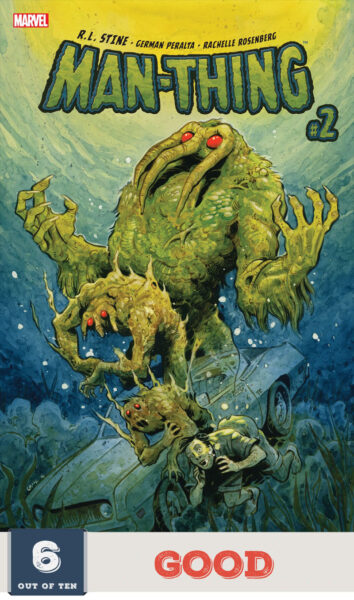 STORY BY: R.L. Stine
STORY BY: R.L. Stine
ART BY: Christopher Mitten and German Peralta
COLORS BY: Rachelle Rosenberg
LETTERS BY: VC’s Travis Lanham
COVER BY: Mike Deodato Jr. and Tyler Crook
In the previous review of issue #1 I wrote about how I didn’t really enjoy how Stein was approaching the character of Man-Thing – I said the humor was just a bit off and just the characterization of Man-Thing was … interesting, but not to my liking. I did however note that I expressed a hope that it could get better and head in a different direction. That has in fact happened. Issue #2 is in fact better and it is in fact headed in a different direction…but only slightly.
Issue #2 starts off exactly where issue #1 left off. As you recall man-Thing has regained his memories of Ted Sallis – the man he used to be – and has regained the ability to speak and reason and set off to Hollywood to become a film star. And at the end of the issue, Man-Thing is attacked in front of a movie theater by another man-thing and a battle ensues.
Turns out that the other Man-Thing is the baser-animal form of himself and after a brief punch up the two merge and combine into one and the recombined monster is then transported back to Florida – to the Nexus of All Realities. Once there Man-Thing finds he has lost the ability to speak but can still scream from his “mouth”. He then notices things out of place – black vultures all around that don’t belong there and attacking bats, etc.
He then rescues a woman from a giant alligator. That woman turns out to be a former girlfriend of Ted’s named Lilly. You might think I would be annoyed by the coincidence of that – not at all. This is the Nexus of all Realities; coincidence is to be expected.
As is also expected giant a snake comes and drags her away. Then Man-thing does exactly what you’d expect … he goes off and does something else. Wait, you expected him to rescue her? Not in this story. I’m sure she’ll be fine wrapped in the coils of an oversized serpent. There is plenty of time to do other stuff.
Granted, the reason he does not rescue her is that he needs to head off and see Oldfather. Who is Oldfather? Why none other than the protector of the Nexus of all Realities of course. But I thought Man-thing was the protector? Yes, dear reader, so did I.
When Man-thig eventually arrives to speak with Oldfather he has been taken and the door to the nexus of all realities has been ripped off its hinges. Oh, the Nexus has an actual, physical door apparently.
All snark aside, this is all well and fine. I like the fact that Stine got Man-Thing away from Hollywood and back to where he belongs – and I do appreciate the infusion of weirdness to the story – exactly what you want from a Man-Thing story.
But again my first thought here is one that I had when reading the previous issue. Who is the audience here? The humor and style are definitely for a younger readership – or at least it feels that way. But let’s face it; this is an obscure character and one that if I’m completely honest appeals mostly to 40-something men doing podcasts in their basement – not to a young adult crowd. Unless I’m wrong? Is there a huge Man-Thing fandom in the 12-18 range? Or maybe he’s going for the Goosebumps nostalgia demographic? I just find it curious.
Here’s an example of the humor:
During the initial fight bystanders say in quick succession: “Did the sewers backup?” “I think I saw this movie and it stinks.” And, “That reminds me I forgot to take the garbage out.” And when seeing a giant alligator Man-Thing thinks to himself, “didn’t I see this movie on TV?” And when the snakes drag Lilly leaving her boot he thinks, “Major fail, these boots aren’t even my size…size 412!” And on and on and on.
Now don’t get me wrong, I like a good quip. Trouble is, these aren’t good quips. Well, not when you are over 12 – getting back to the “who is the audience” thing.
I do like the fact that Stein is taking Man-Thing’s newfound abilities away. Although I do find that the fact he has a mouth too annoying. And I know, I know that probably sounds immensely nitpicky. And it is but hear me out – there is a reason.
The character of Man-Thing – what makes him unique – is not simply that he is a monster. It is that he is an isolated monster. He cannot relate in a typical way. He has no ears, no mouth – he cannot even think rationally. He is a blank slate and the only way he can interact with the world around him is through feelings and emotions. He empathically connects with his surroundings, with the people around him; so that through his perspective – told in the third person, and this is important – we the reader get a different perspective on how people interact with one another.
We get insight into this interaction firstly through (and about) Man-Thing himself because he feels what others feel he has a deeper connection to an individual and can be generous and kind and helpful – but the fact that his shape is a hideous slime creature his attempt to help is usually perceived as an attack – and he has no way of communicating otherwise. Every gesture just reinforces fear – and fear actually causes Man-Thing to react violently. Situations will always end in misunderstanding. This is the tragedy of the character. The need and the desire to help, to protect – but trapped in a form that repulses and allows no ability to explain intent. It’s really rather sad.
So by giving him his faculties back and allowing him to interact normally – in a normal human way – it removes what is truly special about Man-Thing and makes him just another monster.
And that goes for his thinking as well. Stein uses an internal narration, what Man-Thing – or rather ted Sallis – is actually thinking. Again, this removes the tragic element from the character. Gerber employed a third-person, omnipotent narration – told from a god’s-eye viewpoint. This kept Man-Thing separate – keeping his psyche a mysterious thing. His thinking was unusual, alien, and animalistic, tinged with childlike wonder and just a touch of sadness. A normal scene told from Man-Thing’s perspective could be ominous or bizarre, and a non-typical scene became surreal or even transcendent. It is why he is such a great conduit through which stories can be told.
By allowing us to hear his inner thoughts – his quippy comments and dad jokes – Stein turns Man-Thing into simply a guy in a monster suit, albeit one he can’t take off, rather than what is so truly interesting about the character. That he is an elemental being of tragic mystery.
So yes, the series is getting better – but I feel it is hindered by the fact that the uniqueness of the character is being ignored or worse – thrown away.

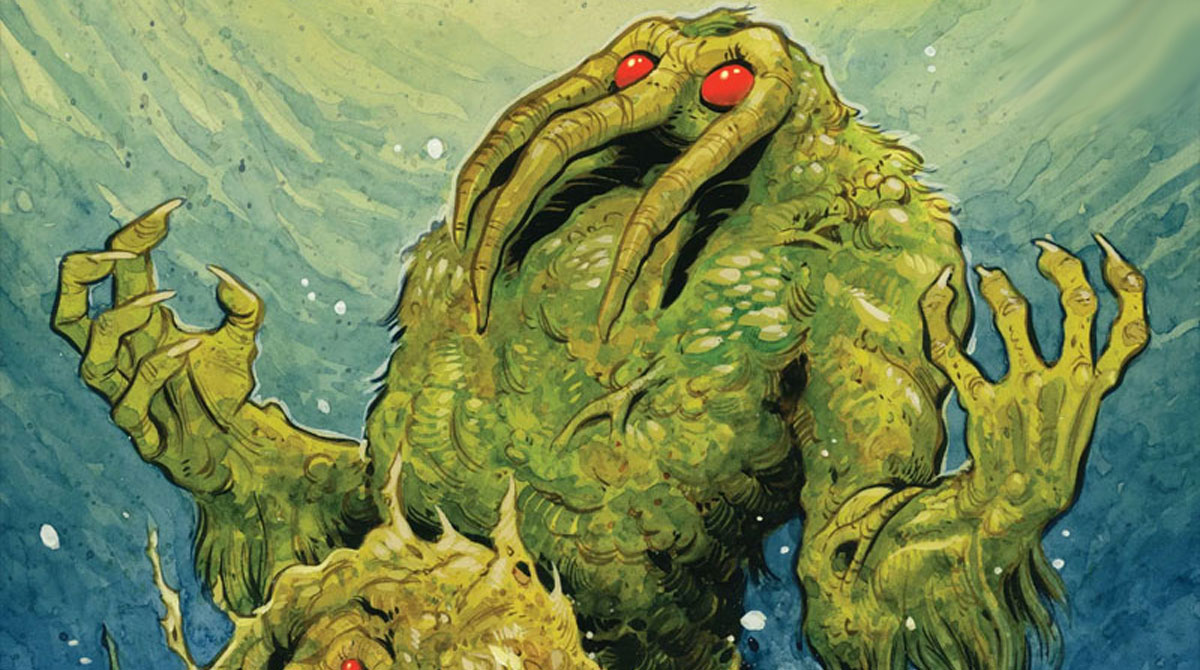
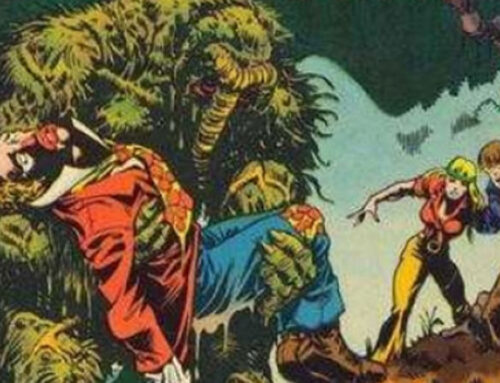


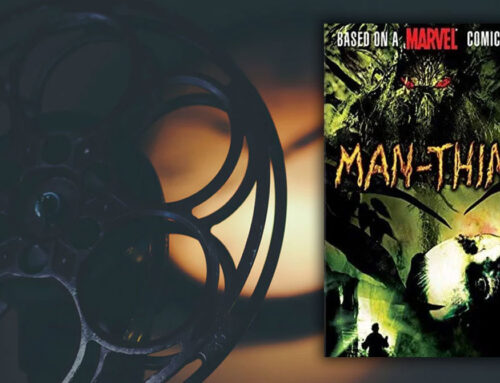
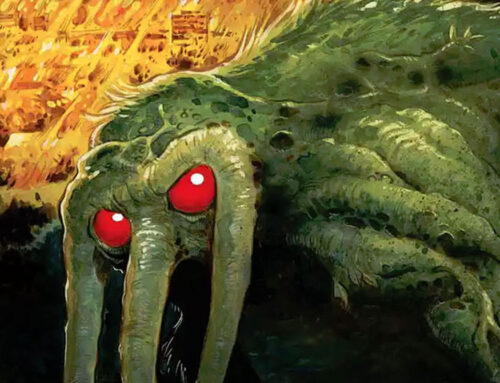
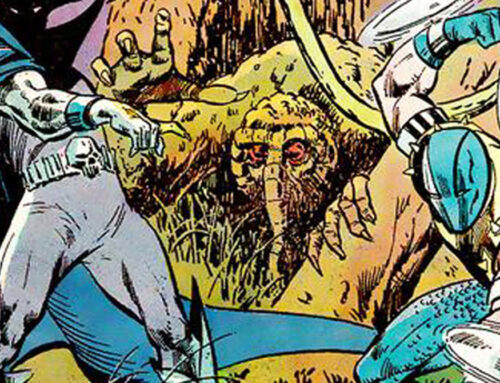

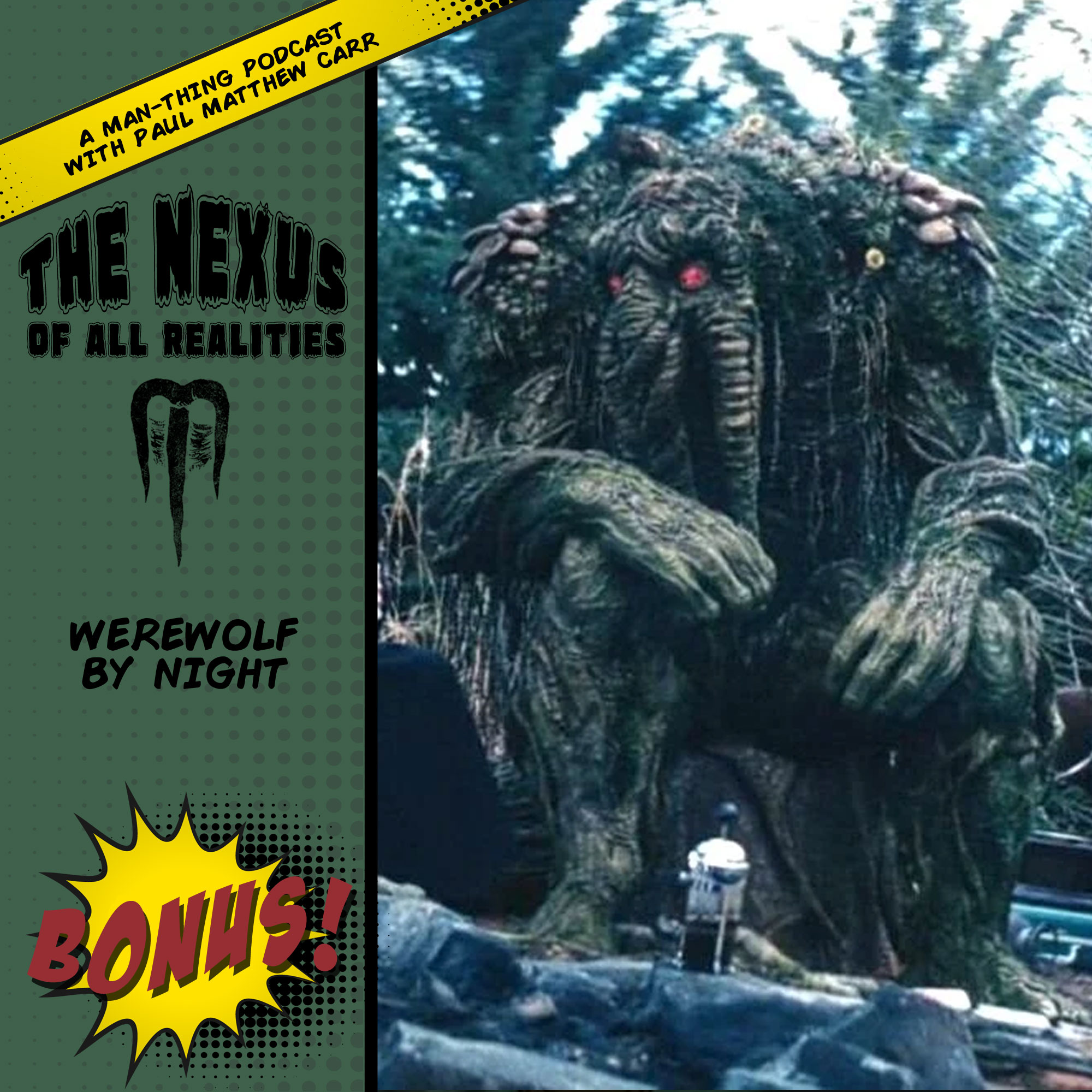
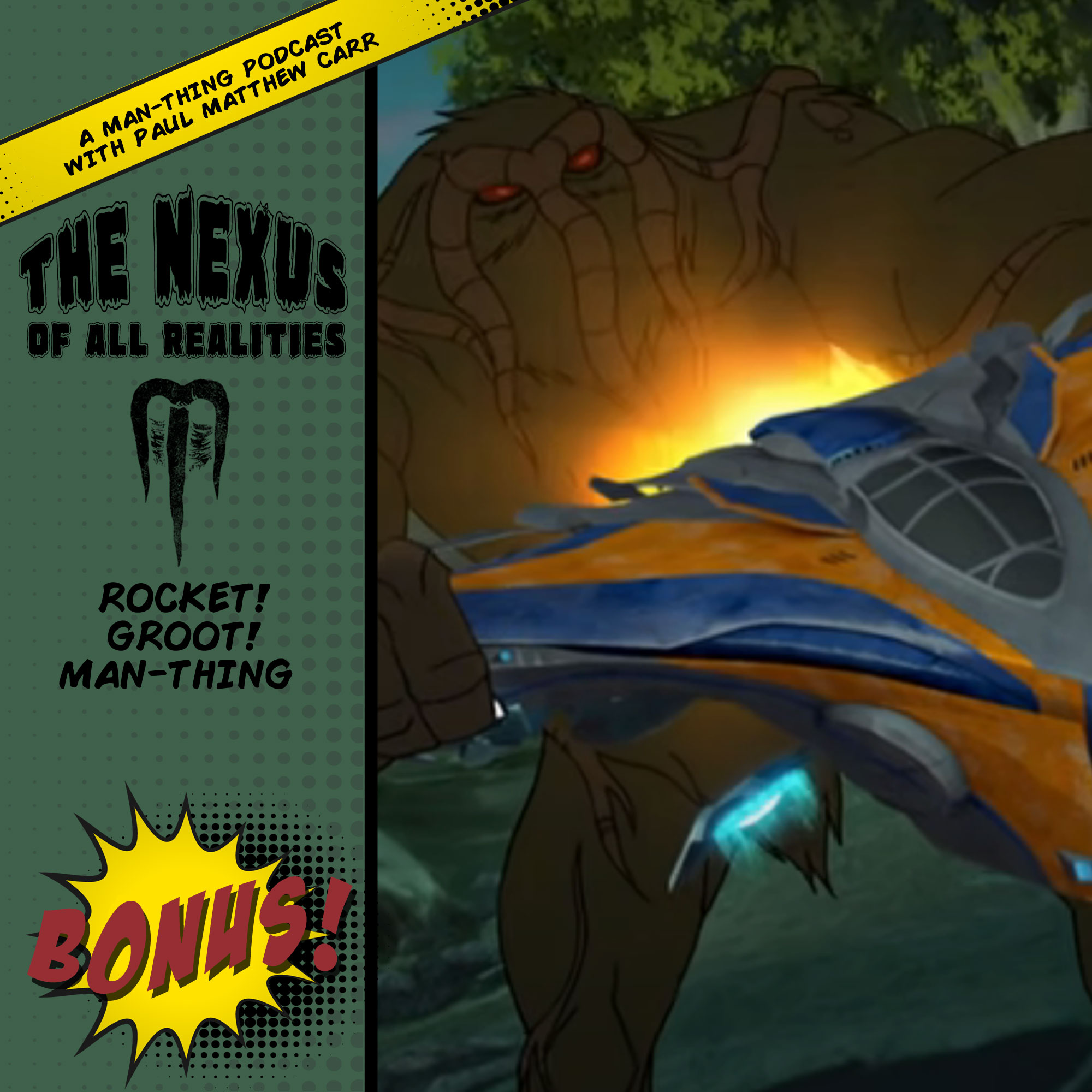
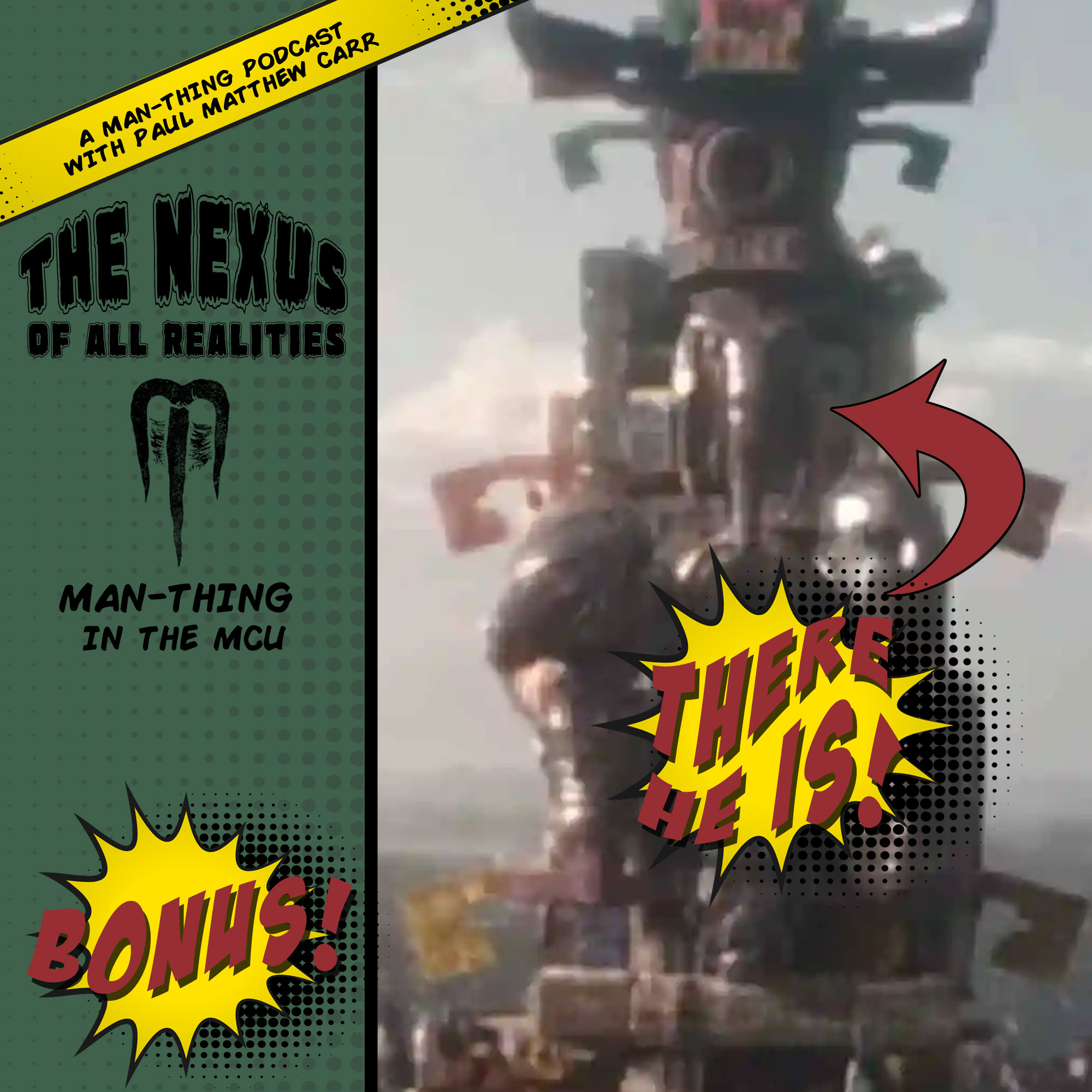
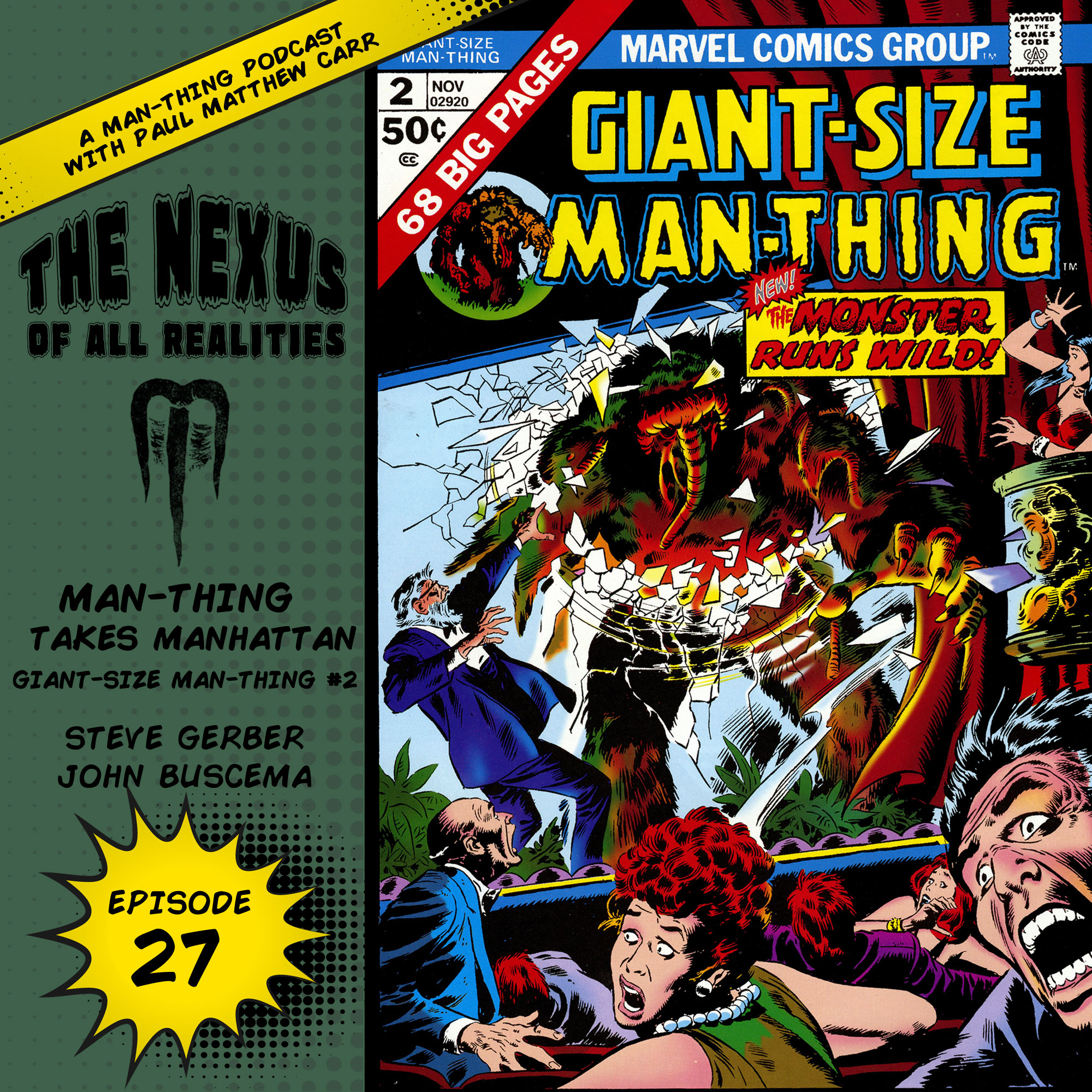
Leave A Comment